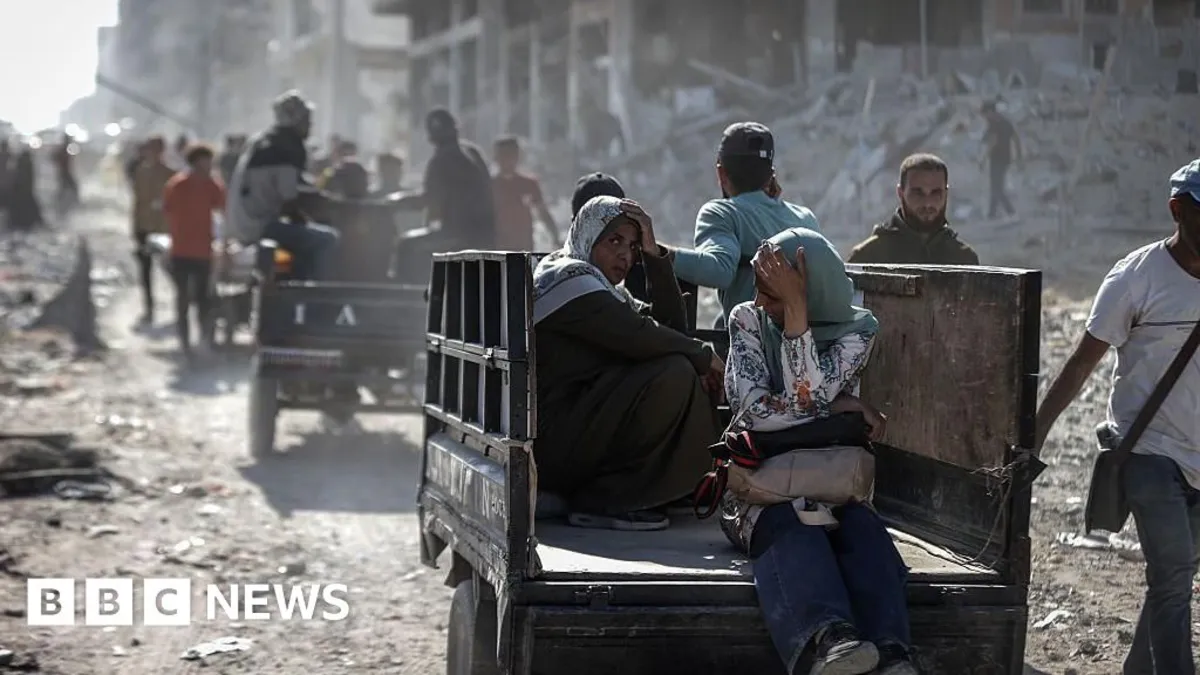
A crucial ceasefire has officially come into effect in the ongoing war in Gaza, following the approval of a US-brokered deal by the Israeli government. This significant development comes after high-level negotiations that involved the personal engagement of US President Donald Trump. While the full text of the agreement has not been publicly disclosed, snippets have emerged from Israeli media, revealing a document that is at times vague and ambiguous.
The agreement, titled "Implementation steps for President Trump's proposal for a comprehensive end of Gaza War," hints at a broader scope for peace but lacks clarity in several areas. It appears to outline the initial phases of a 20-point plan that President Trump announced at the White House last week. Negotiations took place in Egypt, focusing on key components such as a ceasefire, a hostage and prisoner exchange, and an increase in humanitarian aid.
Despite its title suggesting a definitive end to the two-year conflict, the document raises questions about its implications. By stating "comprehensive end of Gaza war," it seemingly lays the groundwork for future discussions about the subsequent stages of the president's plan. Notably, it implies that hostilities will not resume, even if negotiations reach a standstill. However, key issues remain unresolved, including the Israeli demand for Hamas to disarm, the extent of Israeli troop withdrawals, and governance of the territory.
After the deal's approval, Hamas's exiled leader, Khalil Al-Hayya, expressed optimism, stating he had received assurances from US and other mediators that the war had officially ended. Conversely, Israeli Prime Minister Benjamin Netanyahu has not publicly confirmed the conflict's conclusion. In a video statement released post-deal, Netanyahu issued a warning that military action would be taken if Israel's conditions, including Hamas's disarmament, were not met. "If this can be achieved the easy way, all the better. If not, it will be achieved the hard way," he declared.
The document lacks clarity on the next steps required for implementing Trump's plan fully, suggesting that Israeli troops could return to previously vacated areas if Hamas fails to comply with the agreement. It does not explicitly rule out the possibility of future air strikes. Prior to the deal, there were concerns among Hamas officials about the potential for a situation reminiscent of Lebanon, where ceasefire agreements have not prevented ongoing air strikes by Israel targeting perceived threats.
Regarding the release of hostages, the agreement states that all hostages, both alive and deceased, should be freed within 72 hours post-Israeli withdrawal. However, it acknowledges the challenge Hamas may face in retrieving all deceased hostages within this timeframe. This concession allows for Hamas to share information on those whose bodies remain unlocated. The document does not clarify the consequences of delays in releasing the estimated 20 hostages believed to be alive, indicating a need for a monitoring mechanism to oversee compliance.
The deal represents a significant diplomatic breakthrough, spearheaded by President Trump, who aims to be recognized for his role in resolving the conflict. The US has exerted pressure on Netanyahu, who has been criticized for undermining previous peace efforts, to engage in negotiations. Meanwhile, Hamas has faced pressure from Egypt, Qatar, Turkey, and its own populace, which is grappling with a dire humanitarian crisis.
The conflict erupted following Hamas's attacks on October 7, 2023, resulting in approximately 1,200 fatalities, predominantly among civilians, and 251 hostages taken. Israel's military response has reportedly resulted in over 67,000 Palestinian deaths, including more than 18,000 children, according to the Hamas-run health ministry, exacerbating the humanitarian catastrophe.
As the first phase of the president's plan unfolds, it may have been the most straightforward. Netanyahu is contending with increasing domestic pressure, as public opinion polls indicate a strong desire among Israelis for a resolution to the conflict. Conversely, Hamas appears to recognize that retaining hostages has become a liability, motivating Israel to continue its military operations. However, the path forward remains uncertain; progress hinges on the continued involvement of the Trump administration, as both Israel and Hamas possess incentives to delay the process. While there is momentum, significant hurdles remain ahead.